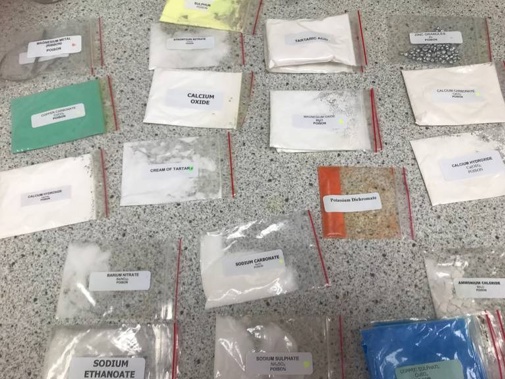
Online school Te Aho o Te Kura Pounamu is under fire for sending potentially fatal chemicals home to students - including a potent powder that causes cancer and a chemical used to make explosives.
The school sent bags of powder containing potassium dichromate, with no warning label, as part of science kits to NCEA students - and confirmed it has been doing so for decades.
Safety data sheets on potassium dichromate state it is a category 1A carcinogen and should be stored in a sealed container “locked up” in a well-ventilated place.
There are 15 listed dangers for the chemical including that it is fatal if inhaled, toxic if ingested and causes severe burns to the skin according to the Material Safety Data Sheet (MSDS).
The kit also included a bag of sulphur which the Ministry of Education states “access should be restricted” because it is used in explosives.
The news comes after the Herald revealed a Te Kura student was recently burnt and needed a skin graft after using the corrosive powder sodium hydroxide included in a science kit.
Earlier this week the school told the Herald it had reviewed its science kits earlier this year and would be withdrawing “all substances with ‘a hazardous nature but with potential educational utility’ from 2024.”
Te Kura confirmed it had been sending the chemicals to students but removed potassium dichromate in August after the president of the Science Technicians Association of New Zealand (STANZ) called with concerns.
Jane Lieshout, the president of STANZ, confirmed she contacted the school in July after one of Te Kura’s chemistry kits was brought to the organisation’s attention.
“One of our members was asked by an acquaintance how to dispose of the chemicals or if she would like the materials for her school,” Lieshout said.
“We were highly concerned at the packaging and labelling of the chemicals, as well as some of the chemicals included.
“Our biggest concern of the chemicals we saw was potassium dichromate due to its highly toxic nature.”
This week a Te Kura spokesperson told the Herald that potassium dichromate was sent to 19 ākonga studying NCEA Level 2 Chemistry in 2023, prior to Te Kura stopping its distribution in August.
After the call from STANZ, Te Kura contacted 19 ākonga studying NCEA Level 2 Chemistry who had received potassium dichromate during 2023 to “apologise for any error”.
Students were advised it was “safe to use the items supplied as long as the directions that came with the pack were carefully followed” and that “a Te Kura staff member would be in touch to discuss the safe return and disposal of the items if the ākonga/whānau had concerns”.
Before the call from STANZ in July, students were given no instructions on how to dispose of chemicals.
After the call from STANZ, students were sent updated safety instructions but were told: “All the chemicals provided as part of our science packs can be safely disposed of by placing them in your rubbish bin.”
A qualified industrial chemist, who is also a former NCEA chemistry teacher, said this was not good enough.
“Potassium dichromate and sodium hydroxide alone are chemicals that should not be in any home and should be collected immediately and disposed of correctly,” he said.
“Waste management people wouldn’t collect waste if they knew it contained these dangerous chemicals. What will that do to staff and the landfill?”
He said Te Kura needed to urgently contact every family that had been sent potassium dichromate to arrange collection.
“In the meantime, they need to ensure it is nowhere near food areas or people,” he said.
The expert said potassium dichromate was banned in most schools and the ones that did use it used a “very diluted solution of it” and would “only be handled by the teacher, with due precautions”.
The bright-coloured powder could be attractive to an infant with disastrous consequences.
“This is way worse than solid sodium hydroxide - and being brightly coloured with no warnings at all is completely mental,” the expert said.
/cloudfront-ap-southeast-2.images.arcpublishing.com/nzme/3F6I3ZAVORDIDKOYO224IC6AUQ.jpg)
Despite safety warnings to keep potassium dichromate locked away in a sealed container, Te Kura sent the carcinogen in a plastic bag with no warning label.
One parent spoken to by the Herald was angry and distressed hazardous chemicals had been sent to the home.
“A lot of the kids at Te Kura are vulnerable and are learning online for good reason,” the parent said.
“They are also doing these experiments in the home so if something goes wrong they are in a much more vulnerable position than in a controlled school lab.”
Ministry of Education leader of operations and integration Sean Teddy said the organisation was working with Te Kura to make sure they were meeting their legislative requirements.
“Like all schools, Te Kura set their own policies and procedures to enable them to meet their obligations under the Health and Safety at Work Act (2015).”
Kirsty Wynn is an Auckland-based journalist with more than 20 years experience in New Zealand newsrooms. She has covered everything from crime and social issues to the property market and has a current focus on safety and consumer affairs.
Take your Radio, Podcasts and Music with you









